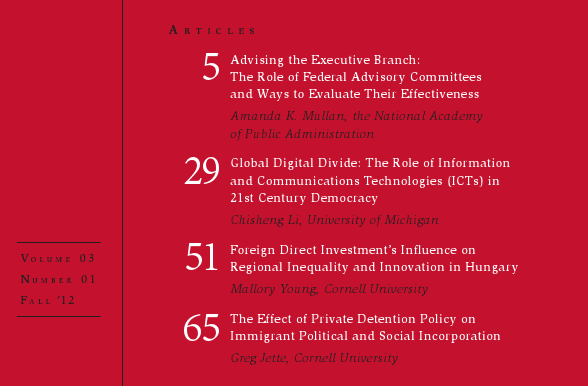Amid the seemingly constant cable news coverage of rioting in the capital city of Kiev, it is very easy for viewers to get caught up in the media frenzy while misunderstanding the root causes of this geopolitical struggle. Although the violence seen on television may bear striking resemblance to the Arab Spring uprisings in Egypt and Tunisia, which escalated so quickly that even U.S. Intelligence didn’t see it coming, the struggle in Ukraine dates back much further.
Following the fall of the Soviet Union in 1991, Ukrainian Soviet Socialist Republic was succeeded by what is now considered modern-day Ukraine. Following a rather tumultuous period, both economically and politically, in November of 2004 Ukraine elected Viktor Yanukovych as the sitting prime minister, He was the candidate supported by Leonid Kuchma, the outgoing president. The problem, however, was that this election was later found to be rigged as Viktor Yuschenko, the opposition candidate, should have been crowned the winner. Revelations of the massive corruption surrounding Yanukovych’s victory in the election led to what became known as the “Orange Revolution”.
The Orange Revolution was a series of mass protests in response to the widely corrupt election of Viktor Yanukovych. This movement was dubbed the “Orange Revolution” as a reference to the official color of the Yuschenko campaign. After considerable nationwide support, a revote election was held in December of 2004 under intense scrutiny from both the domestic and international community. This time around, Viktor Yuschenko was rightfully named the President of Ukraine.
Despite the promising results of Ukraine’s democratic 2004 revote, the country still faced considerable economic challenges. In the 2010 elections, Viktor Yanukovych mounted another bid for the presidency and won – legitimately this time – as voters sought a candidate that could restore some degree of economic stability. This election also highlighted a clear sense of division among Ukrainians, with the country, along with the vote, being split almost down the middle. The country is a divided one, both geographically and philosophically, between east and west. This divide only deepened with the imprisonment of Yulia Tymoshenko, the leader of Yanukovych’s opposition, in a trial that many saw as politically motivated.
 Two-thirds of the country’s citizens are considered ethnic Ukrainian and speak the Ukrainian language. These citizens are located primarily in the west and center of Ukraine, including the capital city of Kiev. The remaining one-third of the population is comprised of Russian-speaking ethnic Ukrainians and ethnic Russians. These groups reside in the east and south sections of Ukraine, closer to the Russian border. Though those in the east and south displayed overwhelming support for Yanukovych, while those in the west and center did not – this divide symbolizes much more than voting blocs. The divide in Ukrainian society represents a struggle over the identity and direction of the country – whether Ukraine will drift deeper into the Russian sphere of influence or develop closer economic and political ties with the European Community, culminating with an eventual induction into the European Union.
Two-thirds of the country’s citizens are considered ethnic Ukrainian and speak the Ukrainian language. These citizens are located primarily in the west and center of Ukraine, including the capital city of Kiev. The remaining one-third of the population is comprised of Russian-speaking ethnic Ukrainians and ethnic Russians. These groups reside in the east and south sections of Ukraine, closer to the Russian border. Though those in the east and south displayed overwhelming support for Yanukovych, while those in the west and center did not – this divide symbolizes much more than voting blocs. The divide in Ukrainian society represents a struggle over the identity and direction of the country – whether Ukraine will drift deeper into the Russian sphere of influence or develop closer economic and political ties with the European Community, culminating with an eventual induction into the European Union.
Many of those in the west and center of Ukraine already view themselves as European. It is for this reason that many Ukrainians were outraged last November when President Yanukovych decided to pursue even tighter economic ties with Russia rather than move forward on what was considered a landmark trade deal with the European Union. This abandonment seemingly derailed the dreams of joining the European Community that many Ukrainians yearned for. Yanukovych’s opposition also fears that the Ukrainian president may end up agreeing to a customs union led by the Kremlin, in an attempt by Russian president Vladimir Putin to gain even more power over Ukraine. In response to the extremely controversial trade decision, thousands of angry protesters took to the streets in Kiev to voice their opposition to the deal, asserting that the destiny of Ukraine lies with Europe, not Russia. After weeks of protests that surpassed even those of the Orange Revolution, both the opposition and Yanukovych forces became more aggressive as the tensions rose and ultimately led to the violence we have witnessed recently.
Although the fighting has already claimed dozens of lives, negotiations in just the past few days have yielded hope. Leaders from both the opposition and the government have signed agreements to end the violence along with the Ukrainian parliament acting decisively to reduce president Yanukovych’s powers by rolling back the Ukrainian constitution, before he fled the capital with warrants issued for his arrest. This deal by the Ukrainian parliament also agrees to release opposition leader Yulia Tymoshenko from prison. In addition, the deal calls for presidential elections to be held by the end of the year. Although it is too early to truly determine whether this deal will prevent the two groups from resorting to further violence, it symbolizes a step toward the peaceful resolution of Ukraine’s ethno-ideological divide.

